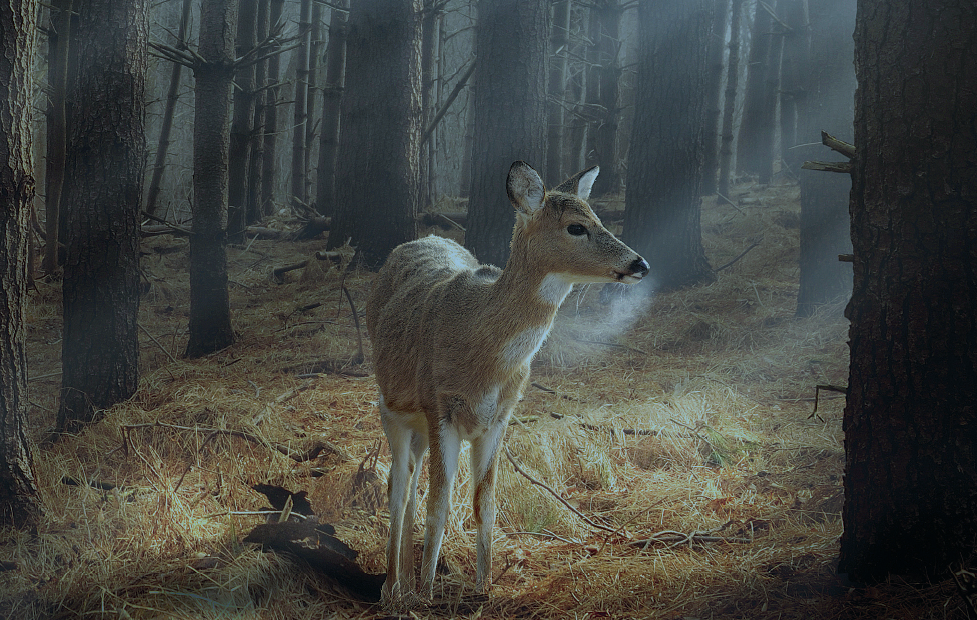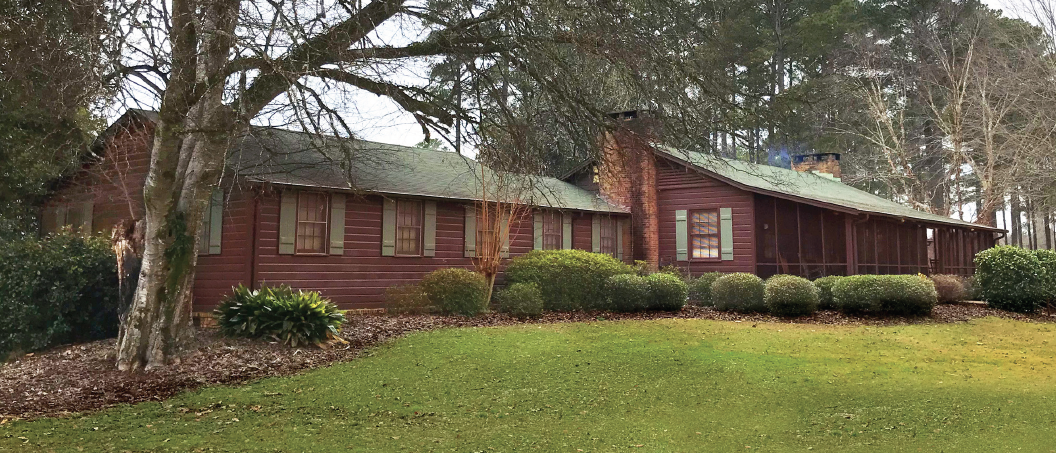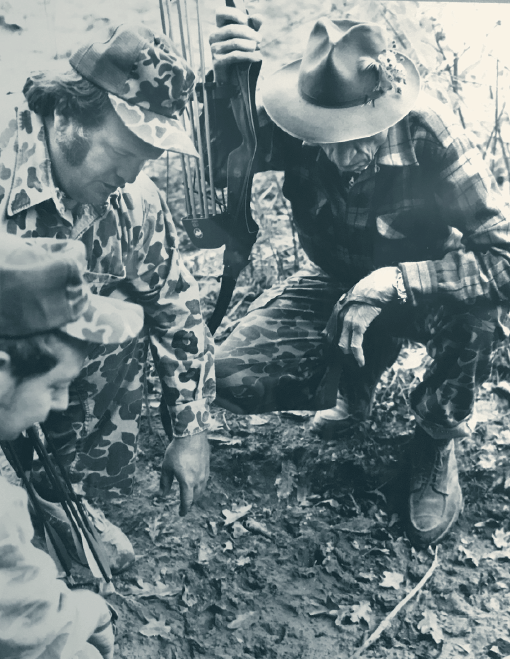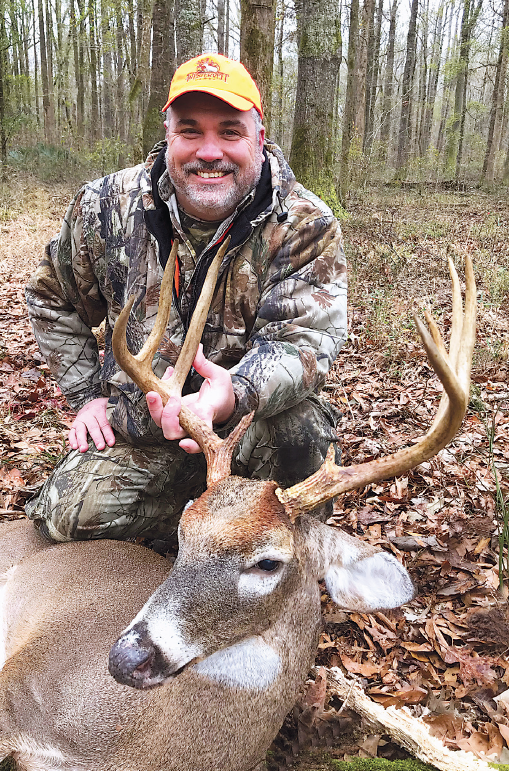Southern Classic: Westervelt Lodge
July 8, 2020



 Hunting,SCA Articles
Hunting,SCA Articles

Westervelt Lodge represents vintage southern hunting at its finest.
Success can be an elusive commodity. And as I pulled in to a wind-whipped and rainy Westervelt Lodge in west central Alabama, my prospects for success looked pretty bleak. The storm front that had blown in during the night had sent the deer scurrying for cover in the bottom timber and thick stands of Loblolly pines and had effectively shut down the rut and promised a tough few days of hunting. But I learned long ago that success often has little to do with a final tally. I had been looking forward to hunting this historic 12,000-acre deer hunter’s dreamscape for years and, storm or no storm, I was eagerly anticipating the next few days.
Since its first official deer hunt in 1951, Westervelt Lodge has always been entirely about the total hunting experience. The classic Southern cuisine, cozy lodging, genuine heartfelt hospitality and of course the classic deer, turkey and bobwhite quail hunting all combine to make you feel like an integral part of the Westervelt family.
Westervelt’s nationally acclaimed wildlife and forest management programs are renowned for their history of providing their friends and guests with an outstanding hunting experience in a free-range, fairchase setting. Such notables as Fred Bear, Ben Rogers Lee and Charley Dickey have hunted and conducted schools here. So when Steven Carroll, Westervelt Lodge’s manager for the past 29 years, invited me for a late January visit, I slipped the new .280 I’d just had built by Monte Fleenor into my old rifle case and hit the road south from my home in Tennessee. I arrived the next morning in time for lunch, just as the rain ended. After checking the zero of my rifle, guide Jeff Oglesby took me three miles to a little green field next to some bottom timber and promised to return at dark.
 Much to my delight, as soon as I settled into my stand the wind began to subside, and at 4:15 two does stepped from the woods 120 yards out. Four minutes later, three more does joined them, including one who was obviously older and larger.
Much to my delight, as soon as I settled into my stand the wind began to subside, and at 4:15 two does stepped from the woods 120 yards out. Four minutes later, three more does joined them, including one who was obviously older and larger.
With the abundance of whitetail deer at Westervelt, Steven had encouraged me to take a doe a day if I wished; but there was still plenty of shooting light left and I waited for a buck to appear. Sure enough, at 4:55 a young seven-pointer entered the field from the far west corner, and a couple of minutes later a four-pointer joined him.
These two held great promise for the future, but neither of them was the buck I had come for. So at 5:20, with the light fading fast and the herd beginning to filter back into the woods, my attention turned to the bigger, older doe. When she turned broadside and halted, I sent a handloaded 160-grain Nosler Partition bullet out across the field and dropped her where she stood.
Dinner that evening was a Southern fried masterpiece, and I slept soundly, secure in the knowledge that I would have at least one cooler of fresh venison to take home.
I awoke at 4:00 a.m. to the sound of rain and wind, and guide Jay Steen took my fellow Tennessean Jerry Young and me out well before first light. He dropped Jerry on the edge of a hardwood bottom next to a broad cut-over before taking me a mile east to the lee side of a ridgeline rich in red and white oaks.
The rain stopped at sunrise. Somewhat sheltered from the wind, Jerry gave a most compelling call from his grunt tube, and within minutes a six-pointer came tearing through the timber to investigate.
“I could see immediately he was a youngster,” Jerry told us later. “But then I heard something following him and spotted a much bigger buck sneaking in from behind.”

For ten minutes Jerry watched, unable to get a respectable, responsible shot as the buck weaved through the thick timber. Finally he challenged the big nine-pointer’s manhood with a seriously confrontational snort-wheeze, and the old buck turned and came straight in.
Jerry shot him at less than 20 yards.
I spent the next couple of days comfortably tucked into some of Westervelt’s high and dry enclosed shooting stands. And though I saw deer each day, none warranted a shooting— except for one big-bodied bruiser I spotted near the edge of a power line at over 400 yards. But I had no shot.
So on the final evening as Steven dropped me off at the trailhead that lead to a broad green field on the edge of a deep dark swamp, I was already looking forward to returning here to Westervelt someday. Other hunters brought in some really nice Alabama bucks, and we’d all had a grand ol’ time, despite the weather…which was about to change for the better.
Around 4:00 the trailing edge of the cold front began to flee the area, dragging blue skies and the lowering sun in its wake. At 4:15 I caught movement as a small doe stepped from the shadows. With little more than an hour of shooting light remaining, she looked mighty tasty.
But it was a buck I wanted. It was a buck for which I had come, and now on this final evening, with the skies clearing and the temperature steadily dropping, I had high hopes he might show up.
At 4:20 the doe looked up and back along her trail, then continued picking at the lush meadow grass. At 4:24, a much larger doe stepped out, paying little heed to her smaller associate. I watched both does closely, first with my binoculars and then through my rifle scope, all the while scanning the edges of the distant swamp while hoping for that one late-day buck to appear.
By 4:30 the sun had settled into the treetops, and the green field had transitioned to a subtle blue-grey as the swamp grew ever darker.
At 4:55, with the last few minutes of the hunt rapidly approaching, I began to think about shooting the big doe. Still, I waited—hoping for a mature buck to appear. If he did not, perhaps I would go ahead and take the doe. My family would be thrilled with the extra meat, and as the distance between her and me continued to grow, so grew the urgency of the decision I knew I must soon make.
But I don’t have to make it at this very moment, I thought. There are a few minutes of shooting light left, and a buck may still show.
It was 5:00, straight up.

At 5:14 and with the light fading fast, the big doe stopped feeding, then turned and began tracking slowly but deliberately back along the far edge of the swamp toward the corner from which she had entered. She paused for a moment, gazing across the field for a few seconds before turning once more toward the corner. I watched her through my scope as she progressed, crosshairs centered low in her chest. I wanted her to be standing still and broadside if I shot, and at 5:19 she halted for a moment and turned for one long last look out across the field.
But in turning, she now stood twisted and more or less facing me, offering a less than ideal shot. I wanted her to be broadside. I needed her to be broadside…and as she stood there taking in the last dregs of her last evening’s light, I eased my rifle off safety.
And still she stood, facing me, as though frozen in time as time slipped away with the light, until finally her left ear flicked and her shoulder twitched and she turned and looked back toward the corner, perfectly still and broadside.
At 5:21 I shot her.
The recoil carried the muzzle of my rifle slightly upward for a split second, and when I picked her up in the scope she was in mid-leap, twisting straight away into the swamp. She made three more bounds before vanishing altogether.
My point of aim had been low in her chest, and she’d bucked high when I touched the trigger—which clearly indicated a heart shot. When I reached the spot where she’d been standing when I fired, the muddy ground was furrowed deep from her initial reaction and strewn with bright red arterial blood.
Light was fading fast as I dialed my scope down to its lowest setting and began following her trail into the darkening swamp, alternately scanning the ground and looking ahead. As I inched deeper into the bog, I tore small bits of white tissue paper and left them attached to the thick understory every few feet to mark her route. But within a few yards, the blood trail became less profuse and then disappeared.
I backtracked along my line of white and then looked ahead again to reconfirm her direction. Moving forward, I struck her trail once more. It led me 30 feet farther into the swamp and then vanished yet again. Returning to the last confirmable blood, I detached my tiny flashlight from its lanyard, mounted it to the brim of my blaze orange cap and began carefully arching side to side. I had proceeded barely seven yards when I spotted the keen crimson reflection of a single blood droplet halfway up a blade of grass. Kneeling and lowering my gaze to examine it more closely, I glanced upward and saw her lying dead ten yards ahead at the base of an old gum tree.
I dragged her out of the swamp that night by moonlight and had her almost all the way across the field when I saw the headlights of Steven’s truck and then his flashlight coming toward me. He took over from there and got her the remainder of the way across the field to his truck while I retraced my steps back to the edge of the swamp to retrieve my rifle and shoulder pouch.
The next morning I bade Steven Carroll and his staff a most grateful farewell and hit the road home with two coolers filled with the finest venison a man and his family can desire—along with many warm memories and a firm determination to return as soon as possible to the classic landscapes, fine hospitality, prodigious game and all my new friends at Westervelt Lodge.
